Marcia D Phillips
historian, author, preservationist
When I moved back to the beautiful foothills of North Carolina nine years ago, I started wondering out loud why no one had ever written a book on the men shaped by this rural place – Daniel Boone, abolitionist Hinton Helper and Enola Gay bombardier Tom Ferebee.
A few years later, I wrote their stories (and that of Peter Stuart Ney because every book benefits from a mysterious Frenchman showing up) in Davie County Mavericks: Four Men Who Changed History published by The History Press in 2018.
Daughter of a Southern mom and Canadian dad, I drink a lot of tea, hot and iced. Raised in the home of a church historian, I read ahead of my age and didn’t know there was children’s literature until I had kids (even took a college course on the subject – thanks for opening up that literary world, Nancy Zorbas). Have loved books as long as I can remember and fell in love with libraries in the Davie County one where I am now privileged to work.
Having spent my life immersed in history and living long enough to experience much of it – began teaching in the Cold War, taught through its end and then long enough to teach students born after that – I was allowed to read it endlessly. Inevitably that led to working in the archival and museum field (The Henry Ford Museum and Old Salem) after getting my second master’s degree in Historic
Preservation from Eastern Michigan University. Always searching for good supplemental reading as a teacher and then being introduced to Public History, writing history in a readable manner felt almost mandatory. I devour the heavily footnoted academic tomes like chocolate but know chocolate is not everyone’s favorite flavor.
Along that journey, I have been married to Dr. Bill and we raised four brilliant adult children who are making their own unique contributions to their generation. We also have three splendid grandsons and a golden doodle named Beau.
When I moved back to the beautiful foothills of North Carolina nine years ago, I started wondering out loud why no one had ever written a book on the men shaped by this rural place – Daniel Boone, abolitionist Hinton Helper and Enola Gay bombardier Tom Ferebee. A few years later, I wrote their stories (and that of Peter Stuart Ney because every book benefits from a mysterious Frenchman showing up) in Davie County Mavericks: Four Men Who Changed History published by The History Press in 2018.
I work managing primary sources, where all history has to begin, in the library History Room, keeping the treasures safe and accessible to other researchers and loving it. Historic Shallow Ford in Yadkin County was written using these resources and will be released September 5th to tell the amazing story of the crossroads of local history. So I am prompted to create this site as a practicing, working historian to promote local history and provide a forum for discussion that I hope will allow great stories and history by the ounce to emerge.
“I am a disciple of the ounce because I mistrust history in gallon jugs.
Corroborative detail is a great disciplinarian. It will reveal a historical truth, keeping one grounded in reality. It forces the historian who uses it and collects it to cleave to the truth. It is wiser to arrive at theory by way of evidence rather than the other way around. And corroborative detail makes a narrative more graphic and intelligible, more pleasurable to read, in short more readable.”
– Barbara Tuchman –
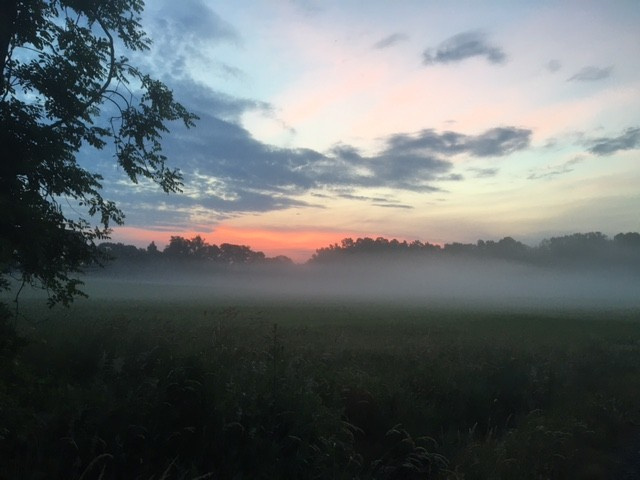
BOOKS
To order or confirm a previous order, email the author at mphistory1@gmail.com
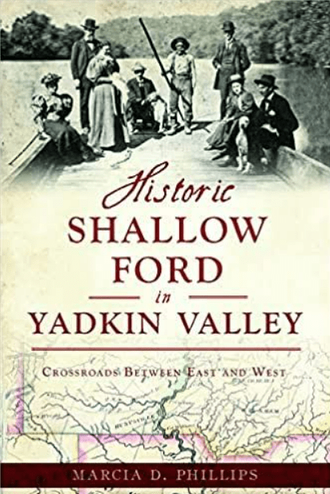
HISTORIC SHALLOW FORD IN YADKIN VALLEY
Shallow Ford, the natural rock path across the Yadkin River, served as the gateway for pioneers to the Western North Carolina frontier and as a stage for history — it was the site of the Battle of Shallow Ford in the Revolutionary War and Stoneman’s Raid during the Civil War.
As the eye of the needle for General Cornwallis in the Race to the Dan, it was also the silent witness to the Great Wagon Road and the trans-Appalachian migration led by local son Daniel Boone.
Bypassed for the last hundred years, Shallow Ford faded from view but remains a landmark of another era.
Marcia D. Phillips recounts the history of a time when safe passage across the river provided the way to reach the American future that lay beyond.
Price $24.85 + $3.99 for shipping
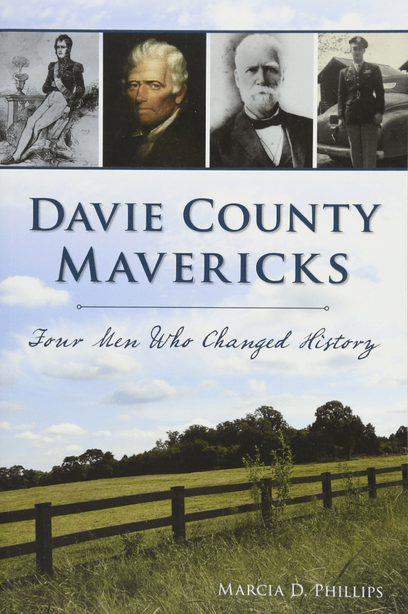
DAVIE COUNTY MAVERICKS
Davie County, in the forks of the Yadkin River, produced several sons who climbed to national prominence. Historian Marcia D. Phillips narrates the stories of these men and the dreams that were born in Davie County.
Daniel Boone learned to hunt along Bear Creek before blazing trails through the Appalachian Mountains.
Hinton Helper grew up on the same piece of land in a slave-owning family, before writing one the defining antislavery books of the antebellum era.
Peter Ney arrived in Davie County after escaping the Napoleonic Wars and influenced a generation of children as a school teacher.
Thomas Ferebee left Davie County for a career in the army and secured a place in history when he pulled the handle to release the first bomb of the atomic age.
Price $24.85 + $3.99 for shipping
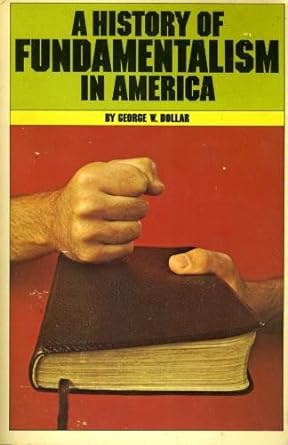
A HISTORY OF FUNDAMENTALISM IN AMERICA
A 2006 reprint of the classic 1976 historical study of the Christian Fundamentalist movement by the first historian to write it as an insider. Dr. George Dollar, formerly Chairman of the Department of Church History at Dallas Theological Seminary, updated his earlier publication after 30 years of changes. Edited by his daughter, Marcia D. Phillips.
Out of Print but a few new copies available.
Price $18.00 + $3.99 for shipping
To order or confirm a previous order, email the author at mphistory1@gmail.com

SERVICES
capturing, preserving and writing history
With a bachelors degree in History and a masters in Historic Preservation from Eastern Michigan University as well as training in book repair from Don Etherington, I have 20 years experience in capturing, preserving and writing history.
Having served several college special collections and owned my business Hidden Treasures in researching and writing historic house and building histories, I also worked at The Henry Ford Museum in Dearborn, MI and Old Salem in Winston Salem, NC.
Now I am in private practice where I can utilize these skills on a contract basis to assist historic collections in small institutions. I am trained and experienced to provide these services on a freelance basis:
- Historical Research and Writing
- Building and House Histories
- Church Histories
- Consultation on Conservation Techniques
- Consultation on Rare Book and Document Special Collections
- Basic Book, Bible and Old Document Repair
- Speaking Presentations
Resume and references available upon request.
EVENTS
MORE EVENTS HAPPENING SOON
HISTORY IN THE PRESENT TENSE
NEW HAPPENINGS AT SHALLOW FORD
Shallow Ford has emerged again from the mists of the Yadkin River and history with recent attention and more to come. A wide but relatively small rockbed crossing across the river from East to West that was the crossroads of travel and transport for centuries is “finding its footing” again in several events.
In August, dozens of determined explorers spent a hot day in the environs of the Shallow Ford – first, walking along the Forsyth side of the river through farm fields to the hidden location of the first Daniel Boone Historic Marker from the early 20th century placed by the DAR. It straddles the old Great Wagon Road bed down to the river and its remoteness reverberates with history. Then a visit to Battle Branch location was followed by tracing the western portion of the wagon road’ ruts down to the other side of river at the very place early settlers would have arrived in this new frontier.
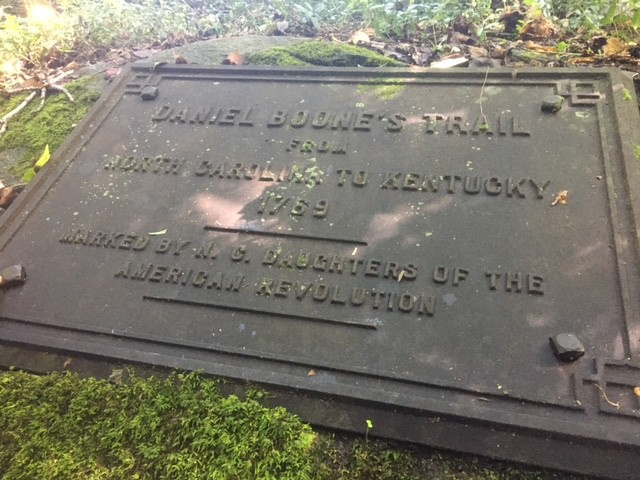
Then on September 10th, the Shallow Ford Daylily Farm was the venue of the book launch of my latest publication Historic Shallow Ford in Yadkin Valley, published by The History Press of Arcadia Publishers. Around 50 people came out on a rainy day to the close proximity of the crossing for book readings, signings, great discussion of a shared love of history and even food samples taken from the book’s pages – persimmon pudding, figgy pudding and pound cake. People lingered, enchanted by the view of the land and each other’s stories.
It has also been determined that the State of North Carolina is moving forward on the historic site that is held in a conservancy, with the determination of the director of this new place. While that has not yet been announced publicly, I can tell you the person is an excellent choice and I have been asked to help. No timetable or date for opening this site yet but hopefully within the next year.
Since the entrances to the Shallow Ford have been privately owned for the last century, access has been limited but due to these recent “stirrings” I have been able to be there several times. The Shallow Ford was anything but shallow lately due to heavy rainfalls. While several men entered the water with the idea of crossing, including the formidable Dr. Bill, I have to admit I lost my nerve at the water’s edge and no one in the end risked crossing the fast moving current. This did give me pause and a different perspective though – It took a lot of nerve and courage to step into moving water even if this was considered the safest way across the river. Images of pleasant wading disappeared when faced with the reality of committing to a moving body of water without a vessel and crossing against the current. My respect for those pioneer women and tradesmen and all the rest deepened. Hopefully the water will subside at some point to where I will feel safe walking across but that will have to wait for another time.
On September 29th at 7 pm, I will be speaking on Shallow Ford for the Davie County Historical and Genealogical Society in my own History Room at the Library. I will also have on display some fascinating relics and artifacts tied to the stories in the book, kept in our vault and rarely brought out to be seen. Any and all are welcome to attend and step back in time.
One of the hopes in writing a book is that it will cause other stories to emerge and that has already happened. A gentleman told me yesterday in the History Room that when young, he and others used the hard, packed dirt of the old Wagon Road on his farm as a basketball court. Two other new meets, at two different events and unknown to each other, related they were the descendants of the German Hessian soldier who was Cornwallis’ man servant when they crossed the Shallow Ford. Responsible for carrying the general’s personal items, a sack with his supposedly gold tea set was swept out of his hands downstream. Cornwallis was so angry he beat the man and commanded him to go in search of it and to not return without it. The thoroughly frightened man decided not to return at all and slipped away into the woods of then Moravian Wachovia where fortunately there were plenty of Germans willing to give him sanctuary. He married one and Mr. Henning lies buried, fittingly, in Germanton today. So is there a golden teapot buried still in the river bed?
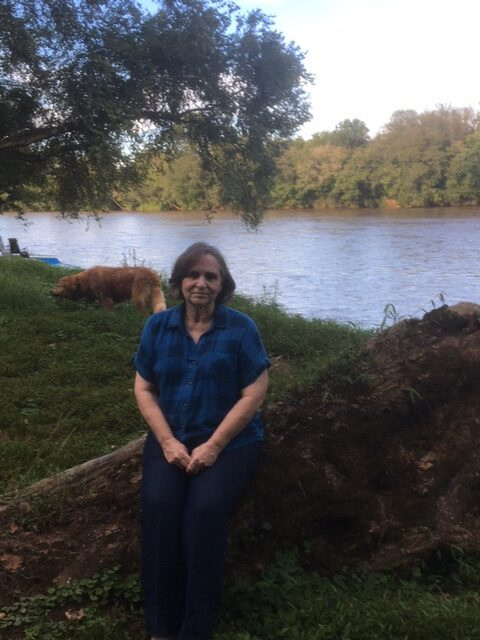
HADRIAN’S WALL
Recently, my husband Bill and I took a planned diversion (let’s just say they weren’t all planned in this crazy summer of travel) off the trek to Edinburgh (but that is another story), a pleasant train trip across the English countryside beside the Tyne River to the town of Hexham and from there to Hadrian’s Wall. Yep – been teaching about and wanting to see this old wall forever. No time this trip to walk it or stay in a cottage alongside it but we did get to spend several lovely hours at the Housestead Roman Fort. 2022 marks the 1900 th anniversary (there is such a thing) of the wall built partly in 122 AD. Good time to go. The Romans are long gone.
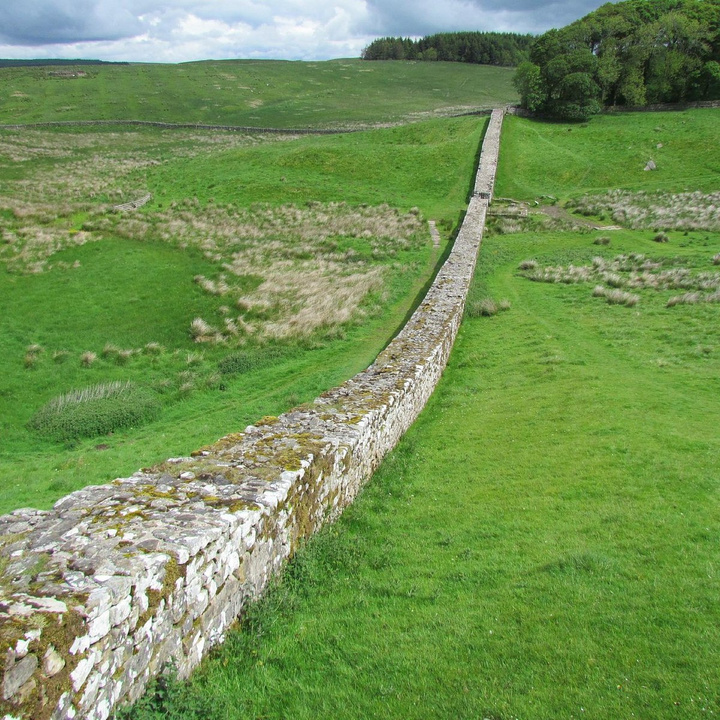
Some places do not live up to expectations when you have yearned to be there forever but this place exceeded all expectations. A dry stone stacked wall meandering across as far as the eye can see beside the remains (some of the best Roman remains in the UK) of an old fort, all on a windswept hill. Yes we took pictures of the place and far off landscape that unfolded. No they don’t do it justice. So I’m cheating and using some from the Heritage Site.
The Roman Empire, the largest of the ancient world, conquered the known (mostly) world of its time, including current England. But as they moved north, they stopped where the Hadrian’s Wall still partly stands today. Legend persists that they went no further because of how fierce and barbaric my ancestors the Scots were. I buy that. Other scholars say the Scottish land wasn’t worth fighting for. I don’t buy that. Other theories state that the empire had overextended itself and simply didn’t have the manpower to go farther. But they found them when they wanted to and besides, the thousands of Roman troops guarding the wall from the rambling sheep (still there today) could have taken the locals and the sheep – the odds were in their favor no matter how stubborn the Scots.
You really do benefit from seeing a place to get a sense of its role in history. Travel to every historic site you can. Standing on the best vantage point for many miles, you ponder why did they stop here? Well those were the orders, of course, but why those orders? And if just power posturing, why build a wall 150 miles long, 80 of it directly east to west across the narrow most part of the island and another 70 miles playing along the Cumbrian coast? One might suspect the wall was built because thousands of soldiers stationed there to defend the line needed something to do. And Hadrian’s Wall does not run concurrent with the border with Scotland as often believed – many local battles on that issue happened after the collapse of Rome. The last structure to be built appears to be a small chapel – for a burial perhaps but maybe also the gospel had reached this outlying area?
Hexham itself is a charming old town with a delightful pub called The Station Inn and the best shepherd’s pie (with my apologies to O’Callahan’s) right outside the train station. Allow time for lunch. But Hexham was never threatened or a threat. The Romans settled in when still farmland and sparsely populated. If land was all they wanted, they got it. It feels there today like it did then – remote and rural.
It’s a real hike up a real hill but worth it. Wander the fort remains and it is easy to sense the praetorium (commander’s house), the bakery (men were paid in wheat and baked their own bread…hmmm), the barracks (for 800 men) and the oldest toilets you will ever see. And, like any decent fort, they had ramparts with gates to enter (they are gone now). This was no shabby, temporary dwelling. Believing the empire would last forever, they had settled in for the long haul. Housesteads is one of 14 forts that line the wall and is the best preserved (after all for a millennium or more, locals scavenged it and many local cottages look like it.
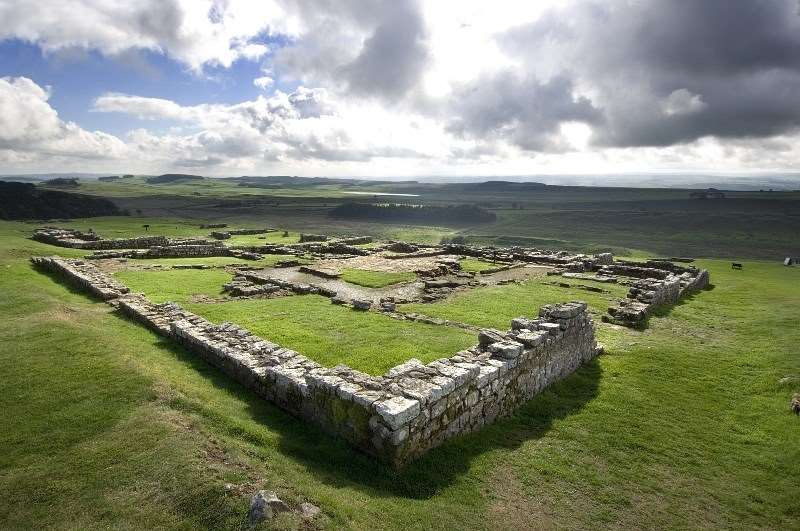
Two hundred years of excavation (exactly as began in 1822) at the fort site have uncovered Roman coins, of course, tools, jewelry and some pretty impressive sculptures (perhaps some of the more skilled soldiers got to do things other than stack rocks). The excavations also uncovered how the walls were constructed, something that has not been revealed in the vast documentation the Romans left behind. Other clues come from a pictorial rendering on Trajan’s Column in Rome itself but since unlikely the soldiers built in full armor as depicted, it draws into question other clues, as any piece of propaganda must.
The first known account of someone walking the length of the wall was in 1801 by an elderly man, aged 77. He covered over 600 miles in 35 days. Now that’s encouraging as William Hutton later recounted “the severe task of creeping up rocks and climbing stone walls, not well adapted to a man who has lost the activity of youth.” And people have been climbing that hill ever since, including yours truly, whose only regret is not having a whole day there.
The invasion of what was not then but is now Great Britain began when the emperor Claudius needed to gain some cred in a tough political arena so he conquered an area of little resistance. Hadrian initiated the wall building to mark the delineation and have a monument to himself to see when visiting the realm. It is now occupied by tourists and that is an invasion available to commoners.
NEY - THE NEXT CHAPTER
Almost two hundred years ago, in 1823, a French stranger showed up in Davie County and became part of our story as a local teacher. Last week more French strangers came to Mocksville to investigate the possibility that he was Marshal Michel Ney of Napoleon’s troops. Four crew members of a French TV show were in this area to excavate Peter Stuart (or Stewart) Ney’s remains in the Third Creek
Presbyterian Church cemetery in Rowan County; but they may have found more evidence that the two men were the same person in a little book I showed them in the Davie County Library’s Martin-Wall History Room, where they also filmed.
Ney taught local boys his native language as well as Greek and Latin, fencing and a lot of very descriptive stories from the Napoleonic wars, perhaps because he knew them firsthand. When a newspaper landed on his desk declaring Napoleon’s death, often when he had imbibed too freely and on his deathbed, Ney claimed to have escaped execution to hide out here in the Carolina backwoods. He was an impactful teacher, influencing writer Hinton Helper and politician Thomas Lanier Clingman among many others.
While there is an impressive tomb in Paris where Marshal Ney was supposedly buried, legend has always persisted that he ended his adventurous life here. Although exhumed at least once before, modern DNA science offered an answer to this mystery. Hence the three Frenchmen and forensic archaeologist Dr. Jennifer Kerner of the University of Paris came to find DNA traces to match to a distant relative in France. The grave was carefully troweled but no human remains were found, no doubt due to the 176 years that have passed and the nature of the highly acidic soil. The bottom of the cedar coffin box was detected disintegrated, having left an imprint in the dirt where samples were taken in case DNA traces lingered but there were no bones. Dust to dust.
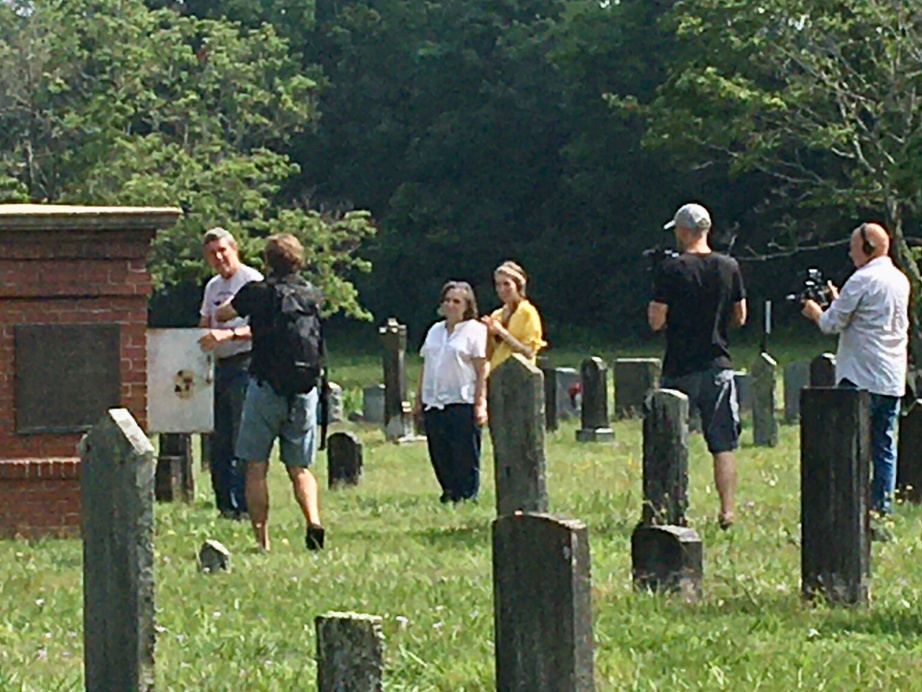
However, in a twist worthy of a French adventure story, two skull fragments arrived at the cemetery during the exhumation, from Davidson College, where they had been donated 70 years ago, identified as belonging to Peter Ney. Could they provide DNA with such a weak provenance? As the dig continued,
searches for other clues brought them to my workplace, the Martin-Wall History Room here.
A French-English-Latin textbook of quotations that had belonged to Ney, donated years ago by Mrs. Walter Woodson, has many marginal inscriptions in Ney’s handwriting (this has also been compared in the past with inconclusive results). Dr. Kermer translated and was intrigued by tantalizing clues in his
marginalia that offer glimpses into his personal life. More work and consultation on those will follow but particularly compelling is a self-portrait he sketched on the back binding of the book, leaving here and in a book in Davidson the only images known of Peter Ney the teacher. But that is not DNA.
It was at Davidson College’s library that the French crew, that is preparing a documentary on the subject due to air in December in the French TV show that translates to History Under The Scalpel, viewed personal items Ney left to the college, including his lapdesk, compass and flute. The flute offered a surprising option to the archaeologist as the possibility of dried saliva inside the wooden instrument might still provide DNA (having been preserved in a better environment than the coffin). What an elegant solution that would be! The flute was swabbed and the skull fragments were scanned and reinterred in Ney’s gravesite, where visitors still frequently leave notes and items to show respect to a man who inspired many and continues to mystify.
This very cold case was finally reopened in a scorching hot week. Will it provide the final answer to our mystery in history? It could if an exact match shows up in the DNA. More likely though, that may not happen and we will have to settle for knowing that it is probably unknowable, with all modern avenues having been exhausted. Regardless, P S Ney (as his signature was with a flourish) will be remembered for the contribution of an exceptional teacher to a generation of Davie County young men; that is a profound legacy in itself. I like that as a former teacher and for the same reason would like to believe this inspiring teacher and role model was not living a lie before his students so telling the truth about
himself.
On a personal note, I loved getting to interact with Dr. Kerner, a fascinating and knowledgeable woman who knew her stuff! And the footage of me makes the cut to be on a French documentary with subtitles, that would be a personal historic first for me.
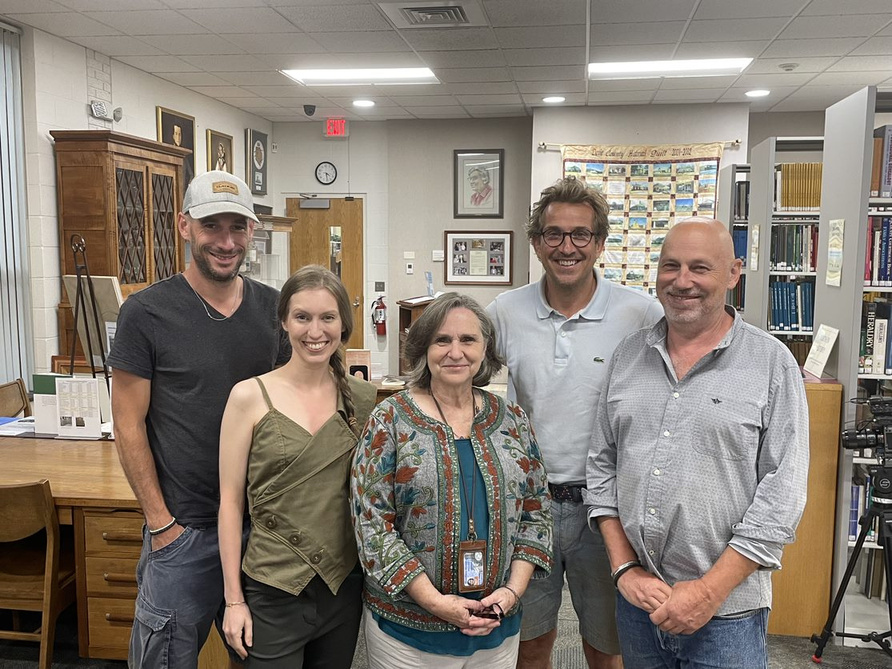
History is always revealing more about itself. In this case, it may come from a foreign source and in a different language. However more local information emerged as area historians gathered under shade trees on a quiet hillside and in local archives and the house where Ney died and compared notes. The sum total of evidence emerged. We can only wait and hope for the next chapter to be as intriguing as the past. Isn’t it always?
Connect with me
Marcia D. Phillips